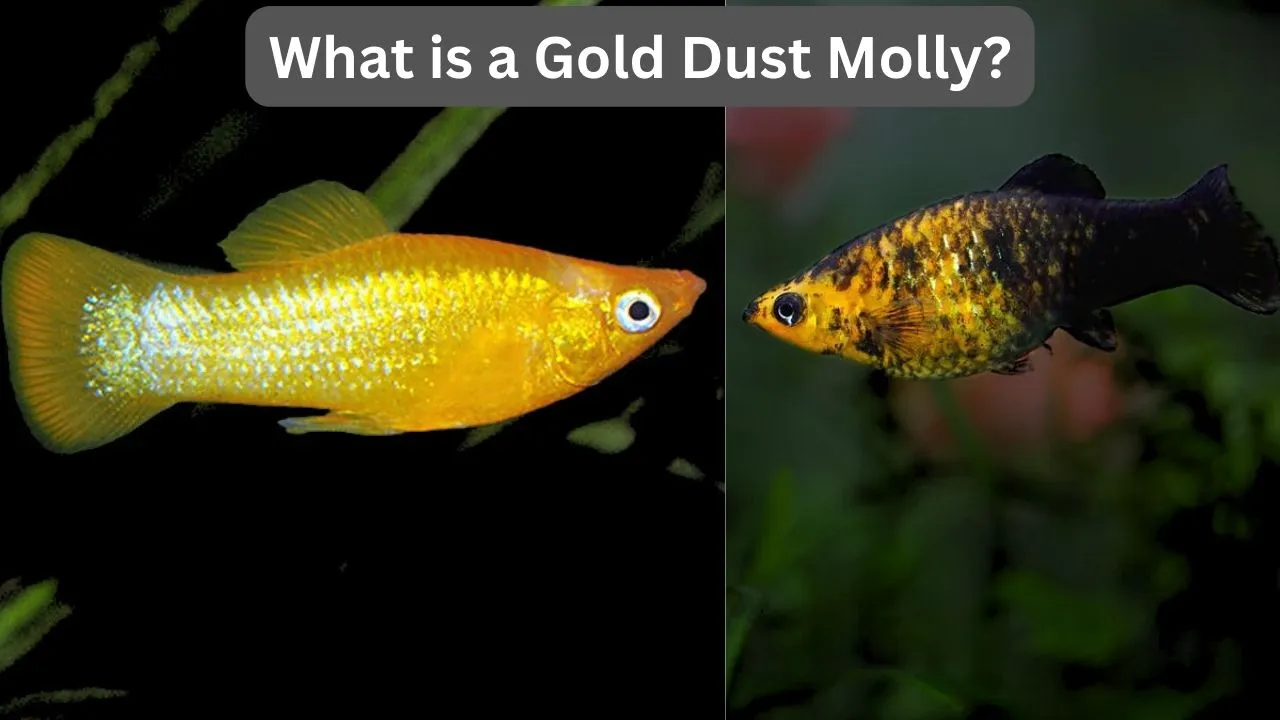Aquarium hobbyists often find themselves captivated by the stunning beauty and charm of gold dust molly fish. These vibrant and hardy fish have gained immense popularity among both beginners and experienced fish keepers alike. However, to truly appreciate and care for these fascinating creatures, it’s essential to have a comprehensive understanding of their unique characteristics, size, breeding habits, and fry care requirements.
In this comprehensive guide, we’ll delve into the world of gold dust mollies, exploring everything from their identification and appearance to their breeding behavior and the intricacies of raising their fry. Whether you’re a seasoned molly enthusiast or a newcomer to the hobby, this article will equip you with the knowledge you need to ensure your gold dust mollies thrive in your aquarium.
What is a Gold Dust Molly?
The gold dust molly (Poecilia sphenops) is a stunning variety of the classic molly fish, renowned for its shimmering golden body covered in iridescent specks that resemble tiny flecks of gold dust. These eye-catching fish belong to the livebearer family, meaning they give birth to live, free-swimming fry instead of laying eggs.
Originating from brackish coastal regions in Central America, gold dust mollies have adapted remarkably well to freshwater aquarium conditions, making them an excellent choice for both novice and experienced aquarists.
Identifying Gold Dust Molly Male vs Female
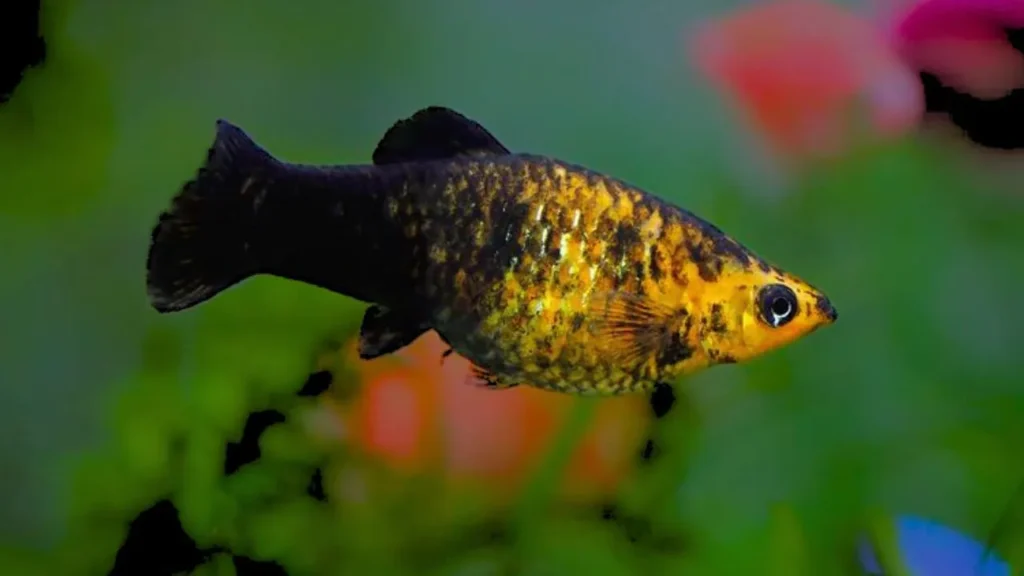
One of the first steps in caring for gold dust mollies is learning to distinguish between males and females. This knowledge is crucial for successful breeding and maintaining a healthy population. Here are the key differences to look for:
Male Gold Dust Mollies:
- Slender, torpedo-shaped body
- Prominent gonopodium (modified anal fin used for reproduction)
- Brighter, more intense gold coloration
- Larger, more flowing dorsal fin
Female Gold Dust Mollies:
- Thicker, more rounded body shape
- Lack of gonopodium
- Slightly duller gold coloration
- Smaller, more triangular dorsal fin
It’s important to note that young gold dust mollies may not display distinct sexual characteristics until they reach sexual maturity, typically around 4-6 months of age.
How Big Do Gold Dust Mollies Get?
Gold dust mollies are relatively small fish, with their adult size ranging from 3 to 5 inches in length. However, their size can vary depending on factors such as tank size, water quality, and nutrition.
When kept in appropriate conditions, gold dust mollies can reach their maximum potential size and display their stunning golden hues to their fullest extent. It’s crucial to provide them with a spacious aquarium and maintain optimal water parameters to ensure their proper growth and development.
How To Breed Gold Dust Molly?
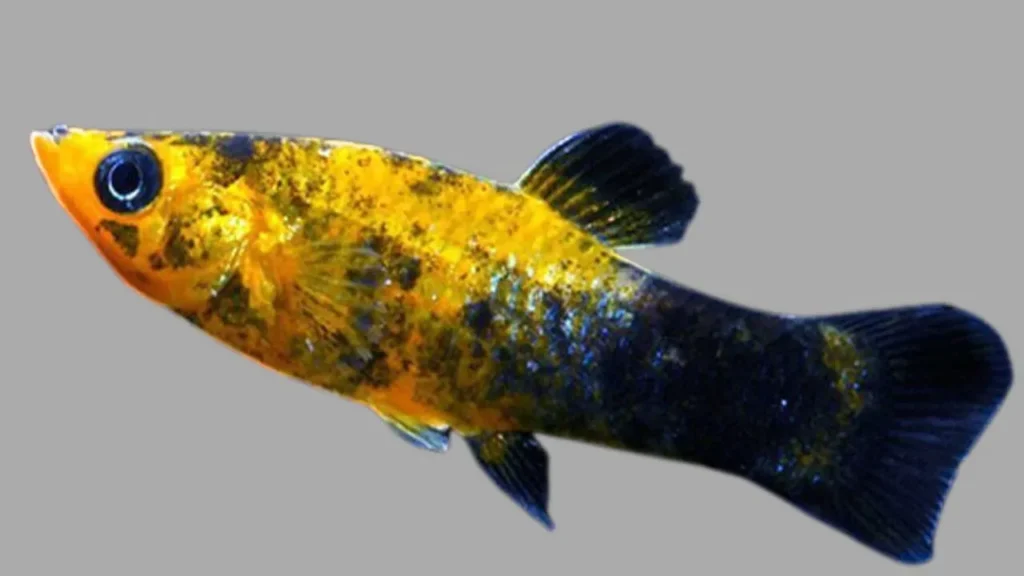
One of the most exciting aspects of keeping gold dust mollies is the opportunity to breed them. Not only is it a rewarding experience to witness the birth of new fry, but it also allows you to perpetuate the beauty and vibrancy of these fish for generations to come.
Before attempting to breed gold dust mollies, it’s essential to understand their breeding behavior and requirements. Here are some key steps to follow:
- Establish a Breeding Tank: Set up a separate breeding tank with a sponge filter, plenty of live plants, and a few hiding spots for the female to give birth in privacy.
- Condition the Breeding Pair: Provide a high-quality, protein-rich diet to ensure the breeding pair is in optimal condition for spawning.
- Introduce the Breeding Pair: Once the female appears gravid (pregnant), gently transfer the breeding pair to the breeding tank.
- Monitor for Signs of Pregnancy: Look for a swollen, boxy-shaped abdomen in the female, which indicates she is carrying fry.
- Separate the Fry: After the female gives birth, remove her and the male from the breeding tank to prevent them from potentially eating the newborn fry.
How to Tell if a Gold Dust Molly is Pregnant
A pregnant Gold Dust Molly will exhibit several signs:
- Swollen Belly: The most obvious sign is a significantly swollen belly.
- Gravid Spot: A dark spot near the anal fin, which is the developing fry.
- Behavioral Changes: Pregnant females may become more reclusive or exhibit nesting behavior.
The gestation period for Gold Dust Mollies is typically around 4-6 weeks.
Caring for Gold Dust Molly Fry
Once your gold dust molly fry have hatched, proper care and attention are essential to ensure their survival and healthy development. Here are some tips for raising gold dust molly fry:
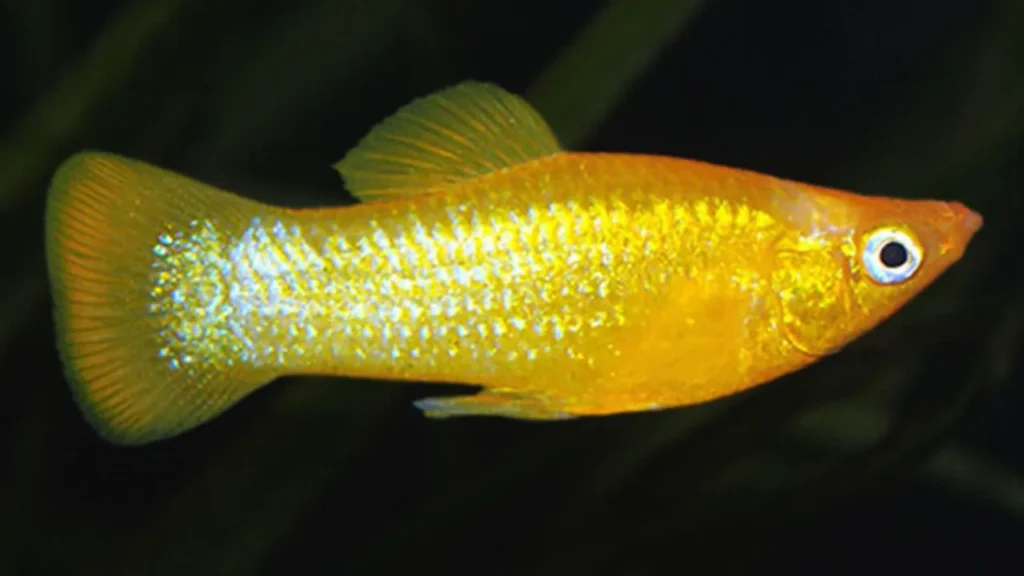
- Feeding: Start by feeding the fry newly hatched brine shrimp or commercially prepared fry food. As they grow, introduce crushed flakes and other high-quality foods.
- Water Changes: Perform frequent, small water changes (10-20% every other day) to maintain optimal water quality and remove any accumulated waste.
- Separating Fry: As the fry grow, separate them into different tanks or containers based on their size to prevent bullying or aggression from larger fry.
- Providing Cover: Offer plenty of hiding spots, such as live plants or decorations, to help reduce stress and aggression among the fry.
By following these guidelines, you’ll increase the chances of your gold dust molly fry developing into healthy, vibrant adults, ensuring the continuation of this beautiful species in your aquarium.
Common Health Issues and How to Prevent Them
Like all fish, Gold Dust Mollies are susceptible to certain health issues. Here are some common problems and how to prevent them:
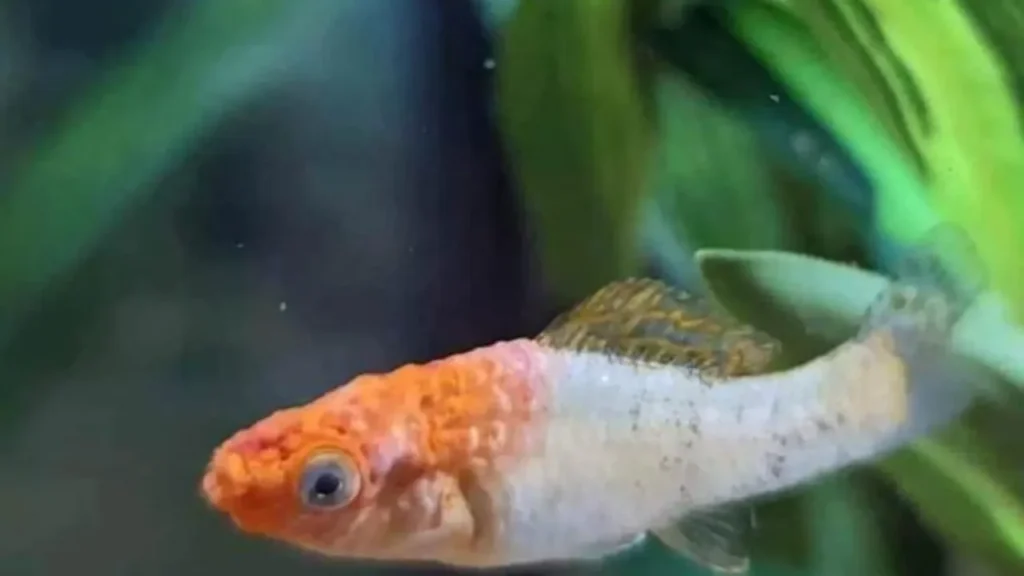
Ich (White Spot Disease)
Symptoms: White spots on the body and fins, scratching against objects.
Prevention: Maintain proper water conditions, quarantine new fish, and avoid sudden temperature changes.
Treatment: Increase the water temperature gradually to 86°F (30°C) for a few days and use a commercial ich treatment.
Fin Rot
Symptoms: Frayed or decaying fins.
Prevention: Keep water clean and free from waste, and avoid overcrowding.
Treatment: Improve water quality and use antibacterial medications if necessary.
Internal Parasites
Symptoms: Weight loss, stringy feces, loss of appetite.
Prevention: Quarantine new fish and feed high-quality, varied diets.
Treatment: Use commercial anti-parasitic medications.
Swim Bladder Disorder
Symptoms: Difficulty swimming, floating or sinking uncontrollably.
Prevention: Avoid overfeeding and feed high-fiber foods.
Treatment: Fast the fish for 24-48 hours and then feed cooked, deshelled peas.
Introducing Gold Dust Mollies to Your Tank
If you’re ready to add some gold dust molly sparkle to your freshwater aquarium, take proper steps when first introducing these fish:
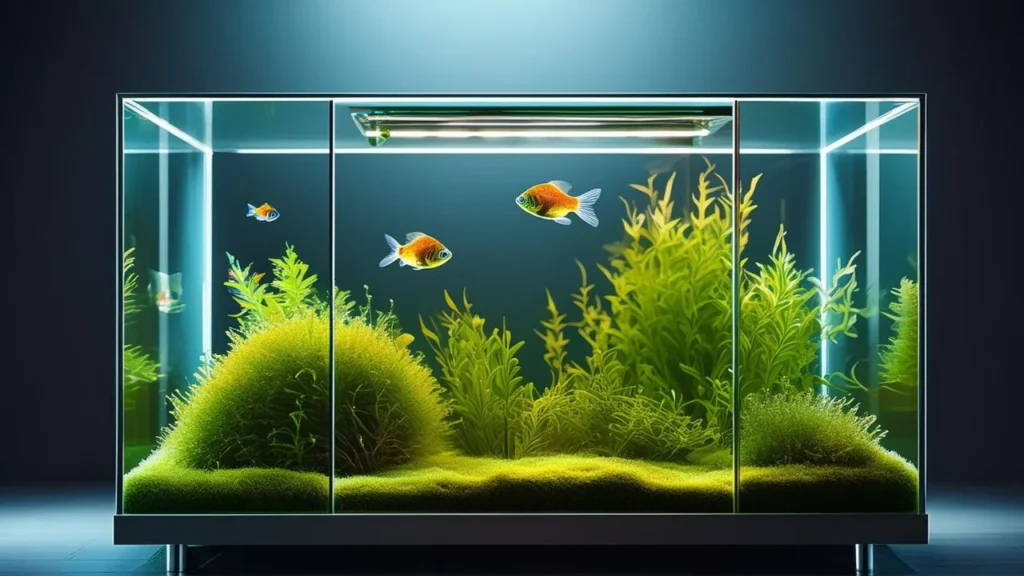
- Acclimate new mollies gradually to the new tank water over 30+ minutes
- Rearrange décor and plants before adding to reduce territorial aggression
- Add mollies to an established tank, not a brand new uncycled system
- Consider starting with a small group of 3-4 juveniles rather than just 1-2 adults
FAQs.
What is the difference between a regular molly and a gold dust molly?
The main difference is the appearance. Gold dust mollies have a stunning golden body covered in iridescent flecks that resemble tiny specks of gold dust, while regular mollies come in various solid colors like black, white, and sailfin varieties.
How can I tell if my gold dust molly is male or female?
Male gold dust mollies tend to have slender, torpedo-shaped bodies, prominent gonopodia (modified anal fins for mating), and larger, more flowing dorsal fins with brighter golden coloration. Females have thicker, rounder bodies, smaller triangular dorsal fins, and slightly duller gold colors.
What is the ideal tank size for keeping gold dust mollies?
A 20-gallon tank is recommended for a group of 4-6 adult gold dust mollies. However, larger tanks are always better as they provide more swimming space and better water quality for these active fish.
Can I keep gold dust mollies with other fish?
Yes, gold dust mollies are generally peaceful community fish that can be kept with other mollies, platys, swordtails, tetras, danios, and many other non-aggressive species of similar size and temperament.
How do I know if my female gold dust molly is pregnant?
A pregnant female gold dust molly will have a significantly swollen, boxy-shaped abdomen compared to her normal body shape. This is an indication that she is carrying fry and will give birth in 4-6 weeks.
What should I feed gold dust molly fry?
For the first few days, feed the newly-born fry newly hatched baby brine shrimp or commercially prepared fry food powder. As they grow, transition them to crushed flakes, freeze-dried foods, and other high-quality foods.
How often should I perform water changes in the fry tank?
It’s recommended to perform small (10-20%) water changes every 2-3 days in the fry tank to maintain optimal water quality and remove any accumulated waste.
Can I keep gold dust mollies in a brackish water tank?
While gold dust mollies originated from brackish coastal regions, they have adapted well to freshwater conditions and can thrive in a fully freshwater aquarium setup. Maintaining brackish water is generally not necessary but can be done by experienced aquarists.
Conclusion
Gold dust mollies are truly remarkable fish that offer both beauty and hardiness to any aquarium setup. Whether you’re a beginner or an experienced hobbyist, understanding their identification, size, breeding requirements, and fry care is essential for successfully maintaining a thriving population of these stunning creatures.
Remember, proper tank conditions, water quality, and nutrition are key to ensuring your gold dust mollies reach their full potential and showcase their mesmerizing golden hues. With patience, dedication, and the right knowledge, you’ll be rewarded with a captivating underwater display that will bring joy and fascination to your aquarium for years to come.

